-
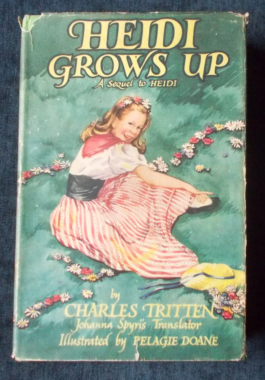 The last chapter of Heidi was called, 'Promises to Meet Again.' In this sequel, written by Johanna Spyri's translator, all the timeless characters do meet again - Peter, the goat-herd; Clara, no longer an invalid; Granny; the good Doctor and Grandfather. There are new characters to meet and new stories to tell as Heidi begins a strange new life at boarding school. Illustrations by Pelagie Doane.
The last chapter of Heidi was called, 'Promises to Meet Again.' In this sequel, written by Johanna Spyri's translator, all the timeless characters do meet again - Peter, the goat-herd; Clara, no longer an invalid; Granny; the good Doctor and Grandfather. There are new characters to meet and new stories to tell as Heidi begins a strange new life at boarding school. Illustrations by Pelagie Doane. -

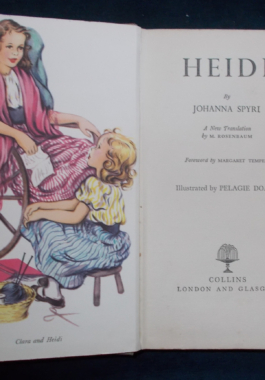
Heidi: Johanna Spyri
$9.00First published in 1880, here is Heidi's story - a young Swiss girl whose parents' sudden death leaves her to be brought up by her Aunt Dete - a hard-working woman who loves Heidi, but does not have the time or resources to look after a child in busy Frankfurt. She leaves Heidi with Heidi's grandfather, who lives in the Swiss mountains. The lonely, embittered old man lives like a hermit on the mountain-top and has nothing to do with the people in the village below. Known to all as “Alm-uncle”, Heidi's grandfather is good-hearted but mistrustful of the villagers. He refuses to send Heidi to school and allows her to roam the pastures with a mischeivous young goat herder, Peter. They become good friends but events take a turn when Aunt Dete decides that Heidi must stay in Frankfurt and learn to earn a living as a companion to a rich invalid child, Clara, and soon learns to read and write along with the little girl. The city begins to take its toll on the young Heidi and she becomes ill and depressed, longing for the open spaces. How Heidi returns to her beloved mountains, reforms her crotchety old grandfather and helps Clara regain her health forms the rest of this perennial classic. With illustrations in colour and black and white by Pelagie Doane. -
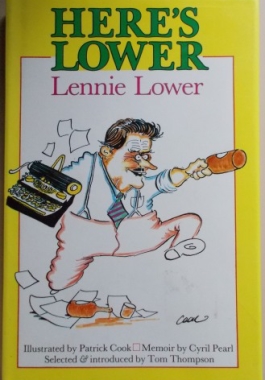
Here’s Lower: Lennie Lower
$20.00Lower only wrote the one novel, Here's Luck, in which Gudgeon and Son battle the great Australian icons - the police, the wife, the booze and the races. Here is a selection of his whimsical newspaper columns of the 1930s, short tales which were a showcase for Lower's natural Aussie anarchy. You can get the low-down on Banking; The Cruel Tactics of the Emu; The Terrors of Wealth; The Perils of the Bathtub and What Bread Is and How To Use It among other wits and wisdoms on life. -
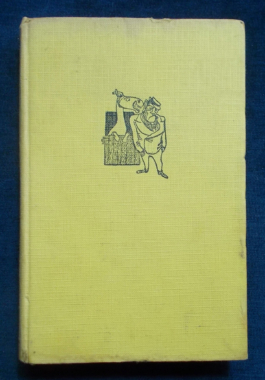

Here’s Luck: Lennie Lower
$25.00Lower's iconic novel which took its place in Australian culture, never to be dislodged. Rather like its main character, Jack Gudgeon. Residing in a run-down Sydney suburb during the Depression is Gudgeon - 48, a male chauvinist, an in-debt cynic, layabout and barroom philosopher. His wife, Agatha, having had more than she can take, has finally walked out on him. With Jack - and his equally unreliable adolescent son Stanley - fending for themselves, pandemonium ensues. Full of sardonic Aussie wit and mad capers, father and son blaze a trail of drunken chaos through the city's pubs, clubs, race courses, and their own increasingly battered home. Along the way, they fall in with a wondrous assortment of dubious characters who turn up to enliven the kind of party that Mr. Gudgeon invariably intends to be a "quiet, respectable turnout," but which, somehow, never is. Illustrated by the equally classic cartoonist 'Wep'. -
 In 1973, ABC Radio broadcast a series of radio talks - Heresies. The series featured provocative and often unorthodox views of social, political economic and cultural issues, often challenging established opinion. It was intended as a medium for ideas, rather than a forum for prominent public figures. Featured in this collection: Professor Frederick May: The Revival of the Cliche and Frolic of Painted Dolls; Rev. Norman Webb: The End of History and Man has Come Of Age; Beatrice Faust: Sex - Common Sense or Popular Fallacy and Nice Girls Do; Helen Palmer: If You Can't Measure It, It Doesn't Exist and many more.
In 1973, ABC Radio broadcast a series of radio talks - Heresies. The series featured provocative and often unorthodox views of social, political economic and cultural issues, often challenging established opinion. It was intended as a medium for ideas, rather than a forum for prominent public figures. Featured in this collection: Professor Frederick May: The Revival of the Cliche and Frolic of Painted Dolls; Rev. Norman Webb: The End of History and Man has Come Of Age; Beatrice Faust: Sex - Common Sense or Popular Fallacy and Nice Girls Do; Helen Palmer: If You Can't Measure It, It Doesn't Exist and many more. -

 A very thorough work which - in this edition - also covers the years since Federation. Contents: The First Visitors; The Penal Settlement; The Colony Expands; The Days of Bourke; The Daughter Colonies; The Coming Of Self-Government; New Zealand In The Early Days; New Zealand 139-1851; The Gold Discoveries And Their Results; Filling In The Map; Constitutional Government; New Zealand Since 1850; Australiasia; Australian Literature: this chapter covers such luminaries as Henry Kendall, Marcus Clarke; A.B. 'Banjo' Paterson, Henry Lawson and Adam Lindsay Gordon, among others. A must for any sincere history buff. With fine colour maps, numerous black and white illustrations and useful margin notations for quick reference.
A very thorough work which - in this edition - also covers the years since Federation. Contents: The First Visitors; The Penal Settlement; The Colony Expands; The Days of Bourke; The Daughter Colonies; The Coming Of Self-Government; New Zealand In The Early Days; New Zealand 139-1851; The Gold Discoveries And Their Results; Filling In The Map; Constitutional Government; New Zealand Since 1850; Australiasia; Australian Literature: this chapter covers such luminaries as Henry Kendall, Marcus Clarke; A.B. 'Banjo' Paterson, Henry Lawson and Adam Lindsay Gordon, among others. A must for any sincere history buff. With fine colour maps, numerous black and white illustrations and useful margin notations for quick reference. -
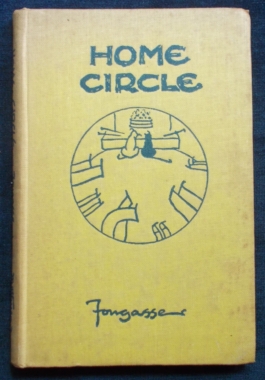
Home Circle: Fougasse
$15.00A wonderful little book of cartoons on the joys of everyday life in wartime, with some good sly social comments on the little human pomposities of the time. -
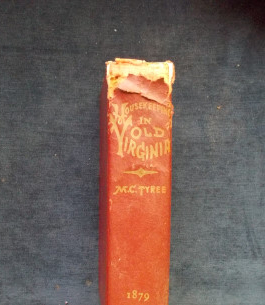
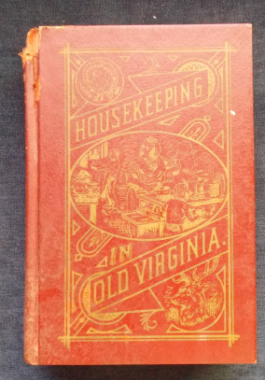 First published in 1879, a collection of over 1700 recipes from over 250 old and famous Virginia families was regareded as the essence and mysteries of Old Virginian 'housewifery' and was acclaimed by the President's wife, Mrs Rutherford B. Hayes. There are recipes for literally everything as well as chapters on remedies and behaviour in the 'Sick Room', housecleaning, restoring old clothes and miscellaneous recipes for cosmetics and cures.
First published in 1879, a collection of over 1700 recipes from over 250 old and famous Virginia families was regareded as the essence and mysteries of Old Virginian 'housewifery' and was acclaimed by the President's wife, Mrs Rutherford B. Hayes. There are recipes for literally everything as well as chapters on remedies and behaviour in the 'Sick Room', housecleaning, restoring old clothes and miscellaneous recipes for cosmetics and cures. -
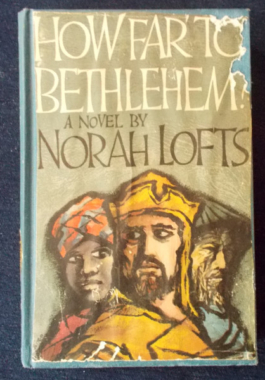 A very unusual and compelling tale of the Three Wise Men and their possible origins: Melchior, the ascetic scholar; Gaspar, the barbarian; and Balthazar, the slave who has escaped from a cruel, vicious mistress. The story begins with Mary, preparing for her marriage to Joseph and learning of her appointed task from the Archangel Gabriel; then the scene moves to Korea, where Melchior, the aged astronomer, has left his home to follow the star whose coming had been so long foretold. Each man reveals his motives and emotions as they make a hazardous physical journey - there are robbers and inn-keepers, Romans and Greeks, princes and Jews - but there is also the spiritual journey of each of these men...the journey that will lead them to a humble destination of the greatest importance.
A very unusual and compelling tale of the Three Wise Men and their possible origins: Melchior, the ascetic scholar; Gaspar, the barbarian; and Balthazar, the slave who has escaped from a cruel, vicious mistress. The story begins with Mary, preparing for her marriage to Joseph and learning of her appointed task from the Archangel Gabriel; then the scene moves to Korea, where Melchior, the aged astronomer, has left his home to follow the star whose coming had been so long foretold. Each man reveals his motives and emotions as they make a hazardous physical journey - there are robbers and inn-keepers, Romans and Greeks, princes and Jews - but there is also the spiritual journey of each of these men...the journey that will lead them to a humble destination of the greatest importance.

















